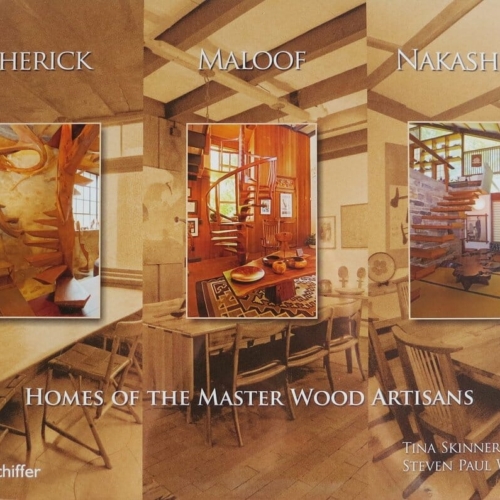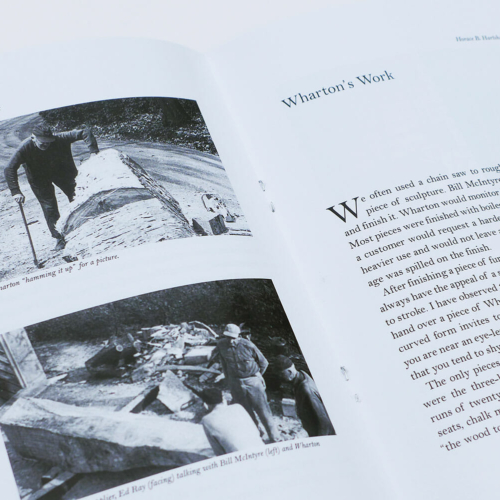An intimate and revealing collection of photographs of astonishingly beautiful, iconic, and undiscovered mid-century interiors. Among significant mid-century interiors, none are more celebrated yet underpublished as the homes created by architects and interior designers for themselves. This collection of newly commissioned photographs presents the most compelling homes by influential mid-century designers, such as Russel Wright, George Nakashima, Harry Bertoia, Charles and Ray Eames, and Eva Zeisel, among others. Intimate as well as revelatory, Williamson’s photographs show these creative homes as they were lived in by their designers: Walter Gropius’s historic Bauhaus home in Massachusetts; Albert Frey’s floating modernist aerie on a Palm Springs rock outcropping; Wharton Esherick’s completely handmade Pennsylvania house, from the organic handcarved staircase to the iconic furniture. Personal and breathtaking by turn—these homes are exemplary studies of domestic modernism at its warmest and most creative.

 An intimate and revealing collection of photographs of astonishingly beautiful, iconic, and undiscovered mid-century interiors. Among significant mid-century interiors, none are more celebrated yet underpublished as the homes created by architects and interior designers for themselves. This collection of newly commissioned photographs presents the most compelling homes by influential mid-century designers, such as Russel Wright, George Nakashima, Harry Bertoia, Charles and Ray Eames, and Eva Zeisel, among others. Intimate as well as revelatory, Williamson’s photographs show these creative homes as they were lived in by their designers: Walter Gropius’s historic Bauhaus home in Massachusetts; Albert Frey’s floating modernist aerie on a Palm Springs rock outcropping; Wharton Esherick’s completely handmade Pennsylvania house, from the organic handcarved staircase to the iconic furniture. Personal and breathtaking by turn—these homes are exemplary studies of domestic modernism at its warmest and most creative.
An intimate and revealing collection of photographs of astonishingly beautiful, iconic, and undiscovered mid-century interiors. Among significant mid-century interiors, none are more celebrated yet underpublished as the homes created by architects and interior designers for themselves. This collection of newly commissioned photographs presents the most compelling homes by influential mid-century designers, such as Russel Wright, George Nakashima, Harry Bertoia, Charles and Ray Eames, and Eva Zeisel, among others. Intimate as well as revelatory, Williamson’s photographs show these creative homes as they were lived in by their designers: Walter Gropius’s historic Bauhaus home in Massachusetts; Albert Frey’s floating modernist aerie on a Palm Springs rock outcropping; Wharton Esherick’s completely handmade Pennsylvania house, from the organic handcarved staircase to the iconic furniture. Personal and breathtaking by turn—these homes are exemplary studies of domestic modernism at its warmest and most creative. A rich collection of imagery explores the actual homes of three of the most esteemed wood artist/craftsmen of the modern era: Wharton Esherick, Sam Maloofi, and George Nakashima. Tour the private homes of these masters and compare their innovation and vision through the medium of their own homes, gardens, and work areas. Step into their environments, where aesthetics are most accurately realized. You’ll delight in Esherick’s humble mountaintop home where straight lines were purposefully forbidden, and Maloof’s sprawling California home that expresses his inexhaustible creativity and industriousness. Nakashima‘s home is a harmonious marriage of Japanese influences with Pennsylvania’s rich natural resources. This book is a must-have for devotees of these artists, as well as aspiring woodworkers who want tutelage from the top.
A rich collection of imagery explores the actual homes of three of the most esteemed wood artist/craftsmen of the modern era: Wharton Esherick, Sam Maloofi, and George Nakashima. Tour the private homes of these masters and compare their innovation and vision through the medium of their own homes, gardens, and work areas. Step into their environments, where aesthetics are most accurately realized. You’ll delight in Esherick’s humble mountaintop home where straight lines were purposefully forbidden, and Maloof’s sprawling California home that expresses his inexhaustible creativity and industriousness. Nakashima‘s home is a harmonious marriage of Japanese influences with Pennsylvania’s rich natural resources. This book is a must-have for devotees of these artists, as well as aspiring woodworkers who want tutelage from the top.







